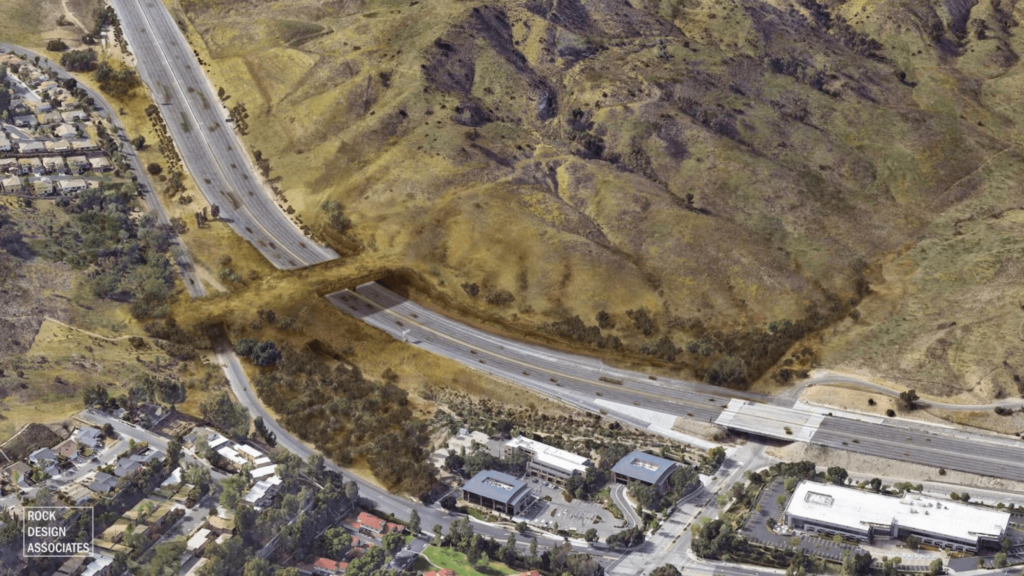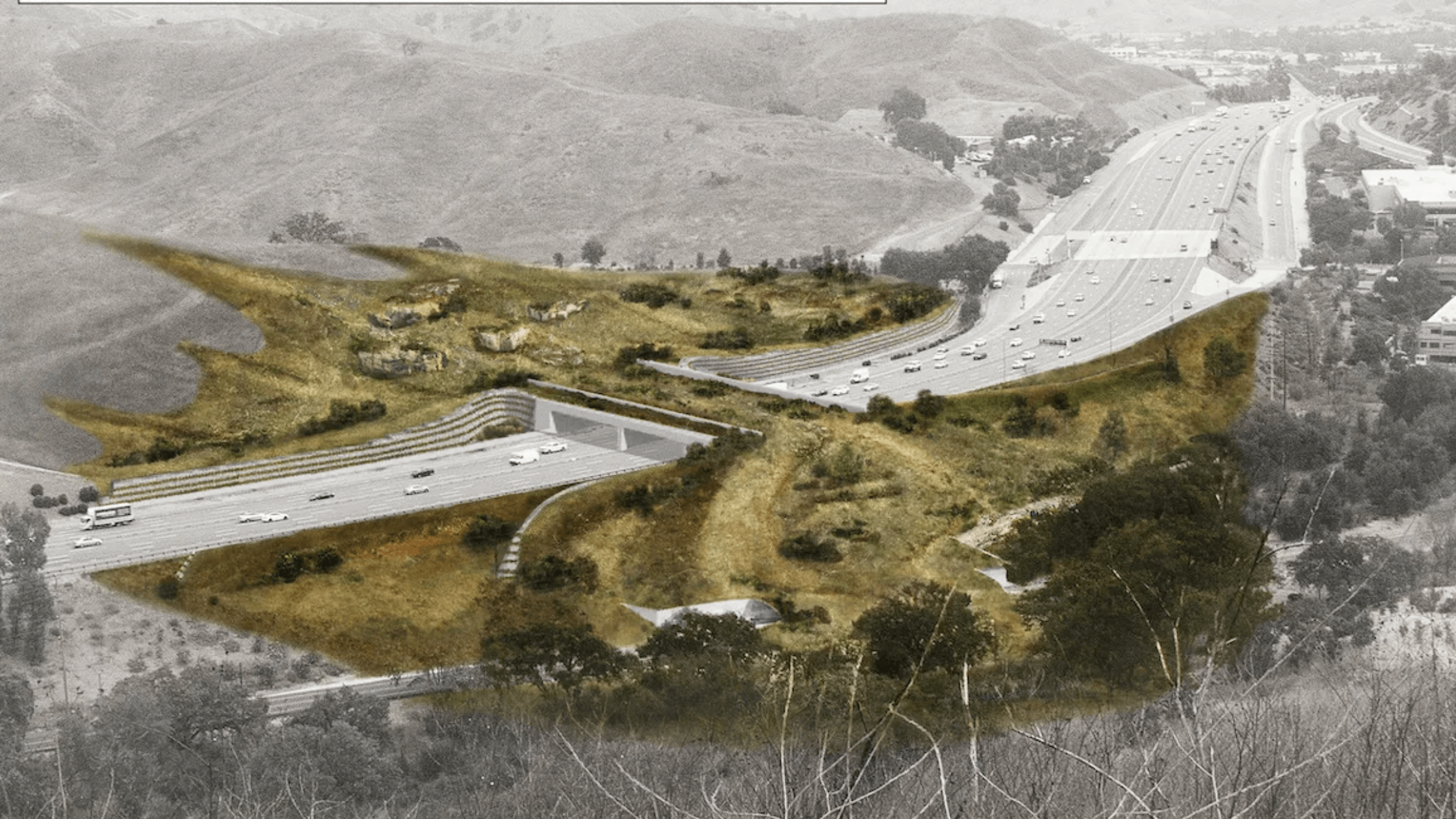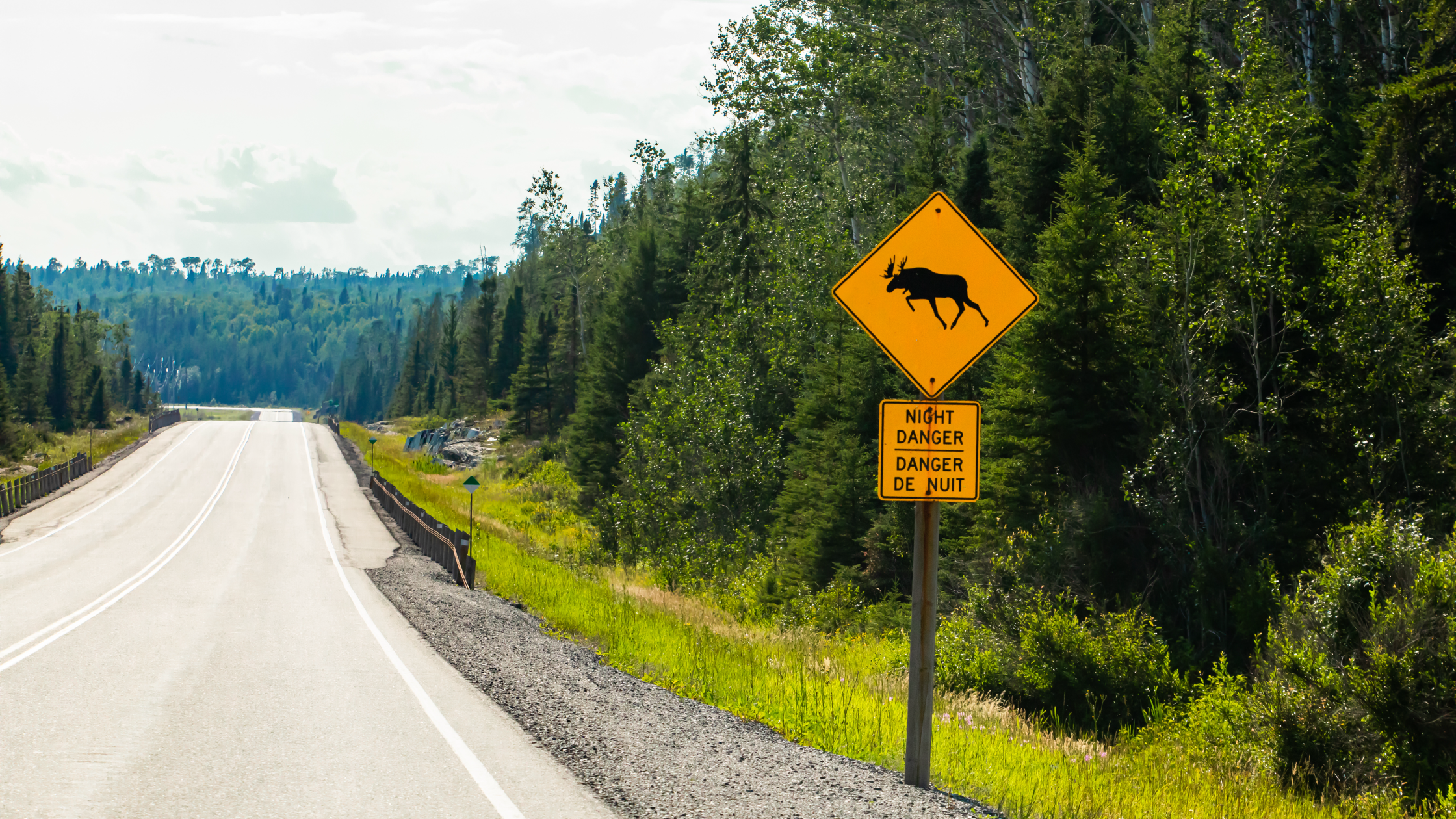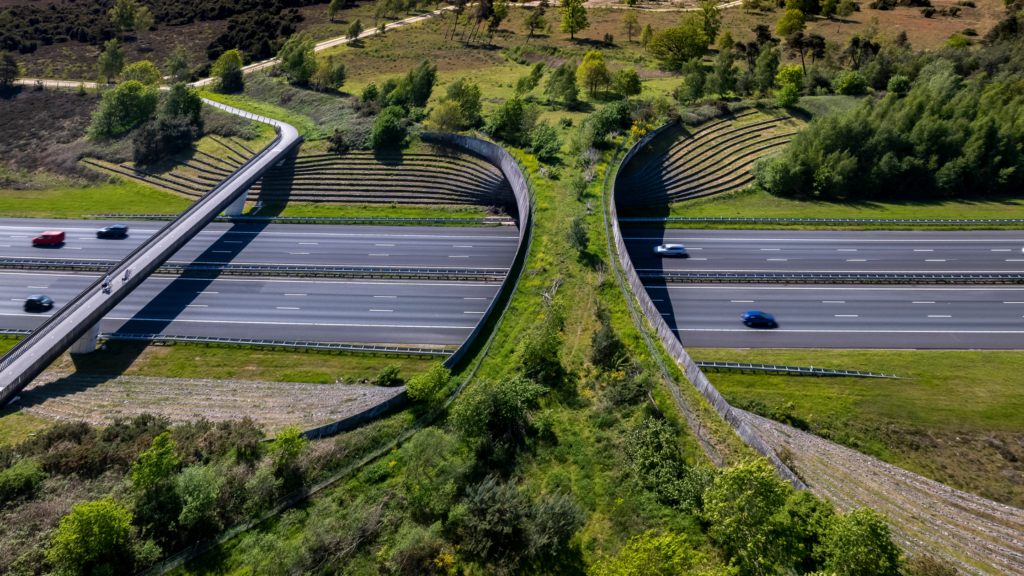Construction on the United States’ largest vegetated bridge is well underway. The Wallis Annenberg Wildlife Crossing is a raised overpass covered with trees and greenery that will offer local wildlife almost an acre of safe passage across California’s busy US 101 Ventura freeway.

Chicago-based Rock Design Associates designed the $92 million project, which will allow animals to move freely between the Santa Monica Mountains and Sierra Madre Range that border the busy highway without being struck and killed by the 300,000 motorists who use it daily.
The first of 82 girders went up in April. Weighing 126 and 140 tons each, the structures will span all ten lanes of the Ventura freeway. The overpass will measure 210 feet long and 174 feet wide and is scheduled for completion in late 2025 or early 2026.
The US has over 48,756 miles of freeways. These large swaths of pavement are efficient forms of transportation for humans moving from point A to point B, but they also bisect wildlife corridors, placing artificial boundaries in regions where animals used to roam freely. The result is an estimated 1-2 million wildlife collisions yearly as deer, bears, foxes, and cougars try to cross busy roads.
The Wallis Annenberg Wildlife Crossing reflects an increased global focus on reducing wildlife collisions, following effective interventions elsewhere. Canada’s Banff National Park currently boasts the greatest number of wildlife crossings in the world, with 44 wildlife crossing structures (six overpasses and 38 underpasses), some dating back 20 years, which have reduced wildlife deaths by 80%.

Those involved with the overpass project hope to see similar results in Los Angeles County. In a press release, Wallis Annenberg, President, Chairman, and CEO of the Annenberg Foundation, said, “Wildlife crossings restore ecosystems that had been fractured and disrupted. They reconnect lands and species that are aching to be whole. I believe these crossings go beyond mere conservation toward a kind of environmental rejuvenation that is long overdue.”
Construction represents a tangible step towards completing a project that’s been ten years in the making. Fundraising for the wildlife crossing began in 2014 as a joint effort between the National Wildlife Federation, the Santa Monica Mountains Fund, and the #SaveLACougars campaign.
Cougars—also known as mountain lions or pumas—are believed to be especially affected by the reduced movement caused by freeways and the genetic isolation that occurs due to being trapped within one geographic area. Southern Californian mountain lions currently show some of the lowest documented rates of genetic diversity for the species and have a 25% chance of becoming extinct within the next 50 years.
Dr. Seth Riley, Wildlife Branch Chief for the Santa Monica Mountains National Recreation Area, says, “This is a vital crossing in one of the last undeveloped areas on the 101, and building a safe passage gives us a chance to ensure the future of the mountain lions in the Santa Monica Mountains and Los Angeles area.”
Those wanting to track construction progress can tune into live webcams on the Wallis Annenberg Wildlife Crossing Website.
Like this and want more? Subscribe to our weekly newsletter for updates on the latest industry projects.


